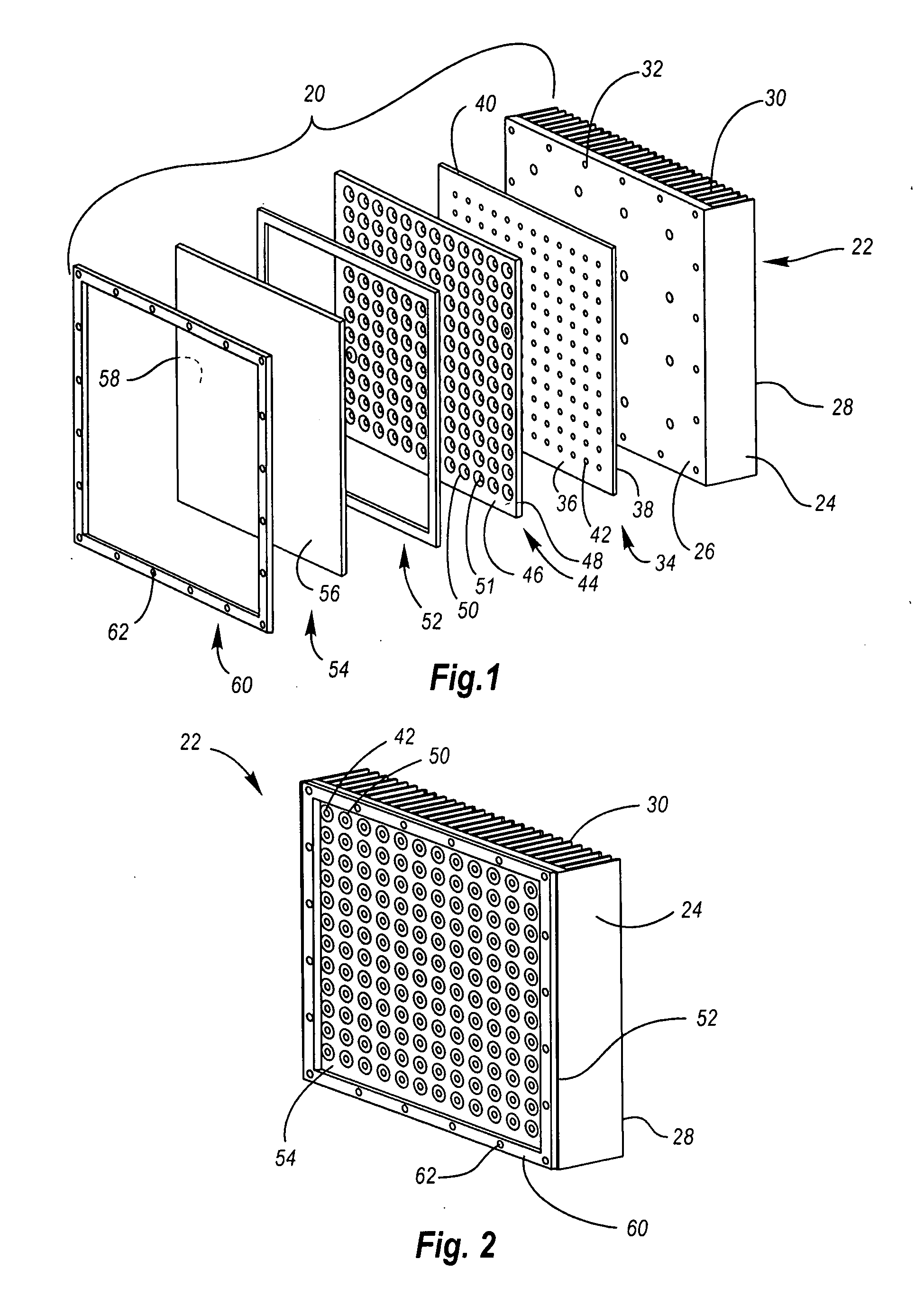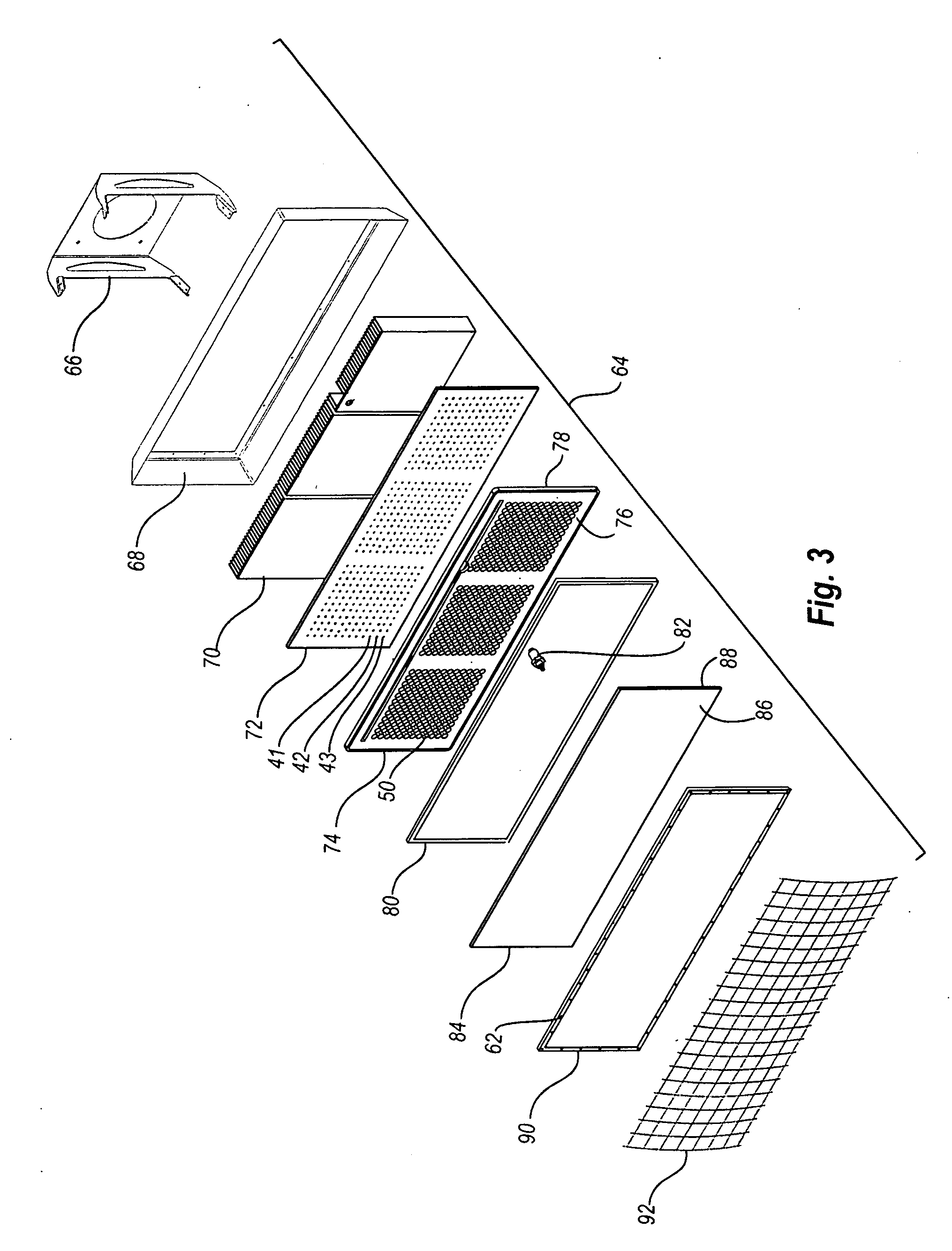Submersible High Illumination LED Light Source
a high-lighting, led light source technology, applied in the field of submersible light sources, can solve the problems of increasing the risk of bodily injury or death of workers, workers in other underwater environments, and the use of ac may also increase the risk of ac use, so as to achieve greater life expectancy, increase the duration between required lamp maintenance, and save materials and labor.
- Summary
- Abstract
- Description
- Claims
- Application Information
AI Technical Summary
Benefits of technology
Problems solved by technology
Method used
Image
Examples
examples
[0076]Implementations may be designed to operate at a variety of voltages and wattages and may produce a variety of lumen total outputs, thereby operating with a variety of efficacies. In lighting design, “efficacy” refers to the amount of light (luminous flux) produced by a lamp (a light bulb or other light source), usually measured in lumens, as a ratio of the amount of energy consumed to produce it, usually measured in watts. This is not to be confused with “efficiency” which is always a dimensionless ratio of output divided by input which for lighting relates to the watts of visible energy as a ratio of the energy consumed in watts.
[0077]Accordingly, for the exemplary purposes of this disclosure, some submersible high illumination light source assembly implementations may operate at about 40 volts, between about 5 amperes to about 12 amperes, and from about 200 watts to about 500 watts, while other submersible high illumination light source assembly implementations may operate a...
PUM
 Login to View More
Login to View More Abstract
Description
Claims
Application Information
 Login to View More
Login to View More - R&D
- Intellectual Property
- Life Sciences
- Materials
- Tech Scout
- Unparalleled Data Quality
- Higher Quality Content
- 60% Fewer Hallucinations
Browse by: Latest US Patents, China's latest patents, Technical Efficacy Thesaurus, Application Domain, Technology Topic, Popular Technical Reports.
© 2025 PatSnap. All rights reserved.Legal|Privacy policy|Modern Slavery Act Transparency Statement|Sitemap|About US| Contact US: help@patsnap.com



